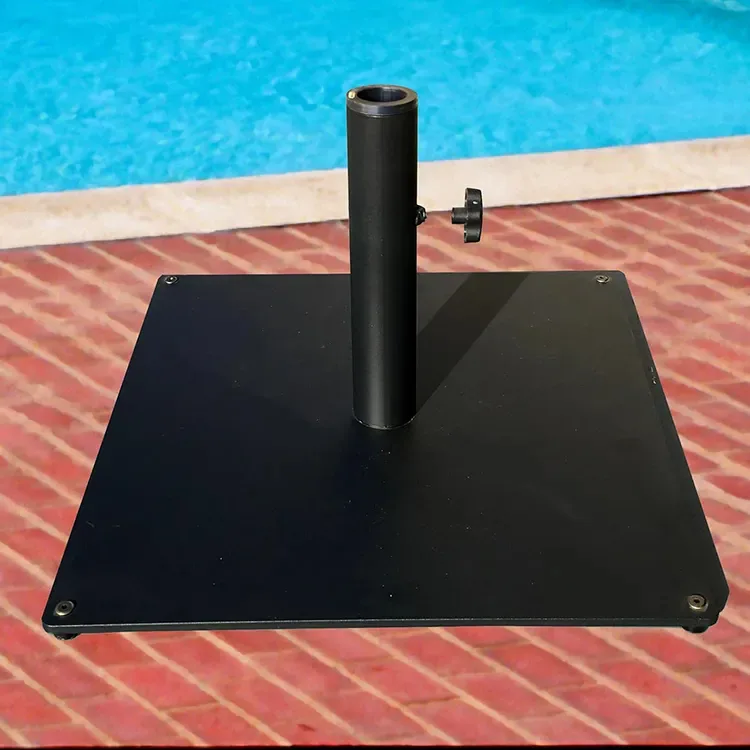
Several factors influence the weight of the base needed for your cantilever umbrella:
The size of the umbrella canopy is the most significant factor. Larger umbrellas catch more wind, requiring a heavier base for stability. Standard cantilever umbrellas range from 8 to 13 feet in diameter.
If you live in an area prone to wind, a heavier base is crucial. Gusty winds can easily tip over a lightweight umbrella, causing potential damage or injury.
The type of surface your umbrella is placed on matters. Solid surfaces like concrete or wooden decks provide more stability, while soft surfaces such as grass or sand will require a heavier base for extra support.
Below is a general guide for choosing a base weight depending on the size of the umbrella:
| Umbrella Size (Feet) | Base Weight (lbs) |
|---|---|
| 6-8 feet | 75-100 lbs |
| 8-9 feet | 100-150 lbs |
| 9-10 feet | 150-200 lbs |
| 10-13 feet | 200-300 lbs |
These weights are recommendations, but always check the manufacturer’s specifications to ensure you have the correct base for your particular umbrella.
These are common options for cantilever umbrellas and are generally made of plastic. Once filled with water or sand, they become quite heavy and stable.
| Base Type | Weight Capacity |
|---|---|
| Water-Filled | 100-150 lbs |
| Sand-Filled | 150-200 lbs |
Metal bases, such as cast iron or steel, provide immediate weight without the need for filling. They are typically more durable and can handle higher winds.
Concrete bases are the heaviest option and provide substantial stability. These bases are perfect for permanent installations but are difficult to move once in place.

A simple rule is that the base should weigh 10 times the diameter of the umbrella in feet. For example, a 10-foot umbrella requires a 100-lb base for standard conditions. For windier areas, you should opt for a heavier base.
Base Weight = 10 x Umbrella Diameter (in feet)For example, a 12-foot umbrella should have a base that weighs at least 120 lbs, but ideally, you should go for 150-200 lbs if your area is prone to strong winds.
Even with a proper base, cantilever umbrellas can be vulnerable to strong winds. To secure the umbrella further, you can add weight by using pavers or additional base plates. This is particularly useful in areas where wind speeds are unpredictable.
Always lower your cantilever umbrella when not in use, especially during windy conditions. Even the sturdiest base might not prevent tipping during heavy gusts.
For added stability, consider bolting the base to a deck or patio, especially if you live in an area prone to storms or frequent strong winds.
Weight bags filled with sand or stones can also be attached to the base to add additional stability. These are especially useful if you’ve purchased a lighter base and need more weight.
Selecting the right base weight for your cantilever umbrella is crucial for its stability and longevity. Consider factors like the size of the umbrella, weather conditions, and the type of surface where the umbrella will be placed. Use the weight guidelines and safety tips provided to make sure your umbrella stays securely in place.
Having the right base not only keeps your cantilever umbrella functional but also ensures safety for the people and objects around it.
| Key Takeaways |
|---|
| – A base should weigh 10 times the umbrella diameter. |
| – Water and sand-filled bases are flexible options. |
| – Stronger winds and softer surfaces require heavier bases. |